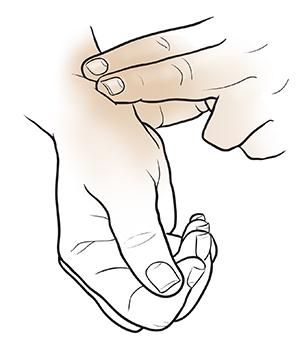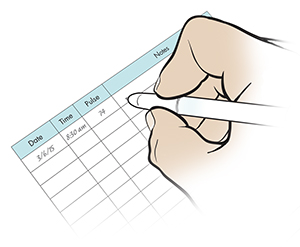Taking your pulse is a way to measure your heart rate. When you take your pulse, you're feeling the force of blood as it's pumped from your heart into other parts of your body. You may need to take your pulse regularly. Or you may just need to take it when you exercise or when you feel something is wrong.
Step 1. Find your pulse
-
With your first 2 fingers (index and middle fingers), press lightly on the inside of your wrist, just below the base of the thumb. You shouldn't be pressing on a bone. Don't use your thumb to do this.
-
The beats you feel are your pulse. If you can't find your pulse, try moving your fingers slightly to a new spot.
Step 2. Take your pulse
-
Count the beats you feel in your wrist as you watch the second hand on a clock. You may be told to count the beats for 30 seconds and then multiply that number by 2. Or you may be told to count for 1 full minute. Both methods will give you about the same result.
-
The number you get is your pulse measurement. It's measured in beats per minute (bpm). A normal pulse when you're at rest is between 60 and 100 bpm. The beats should be regular (evenly spaced).
Step 3. Write down the results
-
Write down your pulse each time you take it. You may be asked to bring the results with you each time you visit the health care provider.




